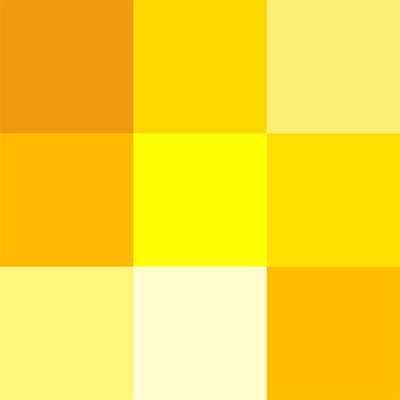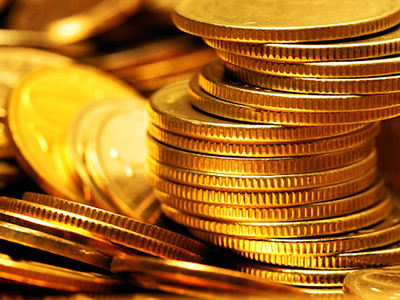Different swatches of Yellow.
The color yellow is the color of
the mind and the intellect
MEANING AND PERCEPTION

According to surveys in Europe, Canada and the United States, yellow is the color people most often associate with amusement, gentleness, and spontaneity, but also with duplicity, envy, jealousy, avarice, and, in the U.S., with cowardice. It plays an important role in Asian culture, particularly in China, where it is seen as the color of happiness, glory, wisdom, harmony and culture.
SYMBOLISM AND ASSOCIATIONS
In the west, yellow is not a well-loved color; in a 2000 survey, only six percent of respondents in Europe and America named it as their favorite color. compared with 45 percent for blue, 15 percent for green, 12 percent for red, and 10 percent for black. For seven percent of respondents, it was their least favorite color. Yellow is the color of ambivalence and contradiction; the color associated with optimism and amusement; but also with betrayal, duplicity, and jealousy. But in China and other parts of Asia, yellow is a color of virtue and nobility.
LIGHT AND REASON
Yellow, as the color of sunlight, is commonly associated with warmth. Yellow combined with red symbolized heat and energy. A room painted yellow feels warmer than a room painted white, and a lamp with yellow light seems more natural than a lamp with white light.
As the color of light, yellow is also associated with knowledge and wisdom. In English and many other languages, "brilliant" and "bright" mean intelligent. In Islam, the yellow color of gold symbolizes wisdom. In medieval European symbolism, red symbolized passion, blue symbolized the spiritual, and yellow symbolized reason. In many European universities, yellow gowns and caps are worn by members of the faculty of physical and natural sciences, as yellow is the color of reason and research.
GOLD AND BLOND

Stacks of gold coins
The word for 'gold' in Latin is aurum, which means yellow. In ancient Greece, some gods were depicted with yellow hair, and men commonly bleached their hair or spent hours in the sun to turn it yellow. However, in medieval Europe and later, the word yellow often had negative connotations; so yellow hair was more poetically called 'blond,' 'light', 'fair,' or especially 'golden.'
VISIBILITY AND CAUTION
Yellow is the most visible color from a distance, so it is often used for objects that need to be seen, such as fire engines, road maintenance equipment, school buses and taxicabs. It is also often used for warning signs, since yellow traditionally signals caution, rather than danger. Safety yellow is often used for safety and accident prevention information. A yellow light on a traffic signal means slow down, but not stop. A yellow penalty card in a soccer match means warning, but not expulsion.
OPTIMISM AND PLEASURE
Yellow is the color most associated with optimism and pleasure; it is a color designed to attract attention, and is used for amusement. Yellow dresses in fashion are rare, but always associated with gaiety and celebration.